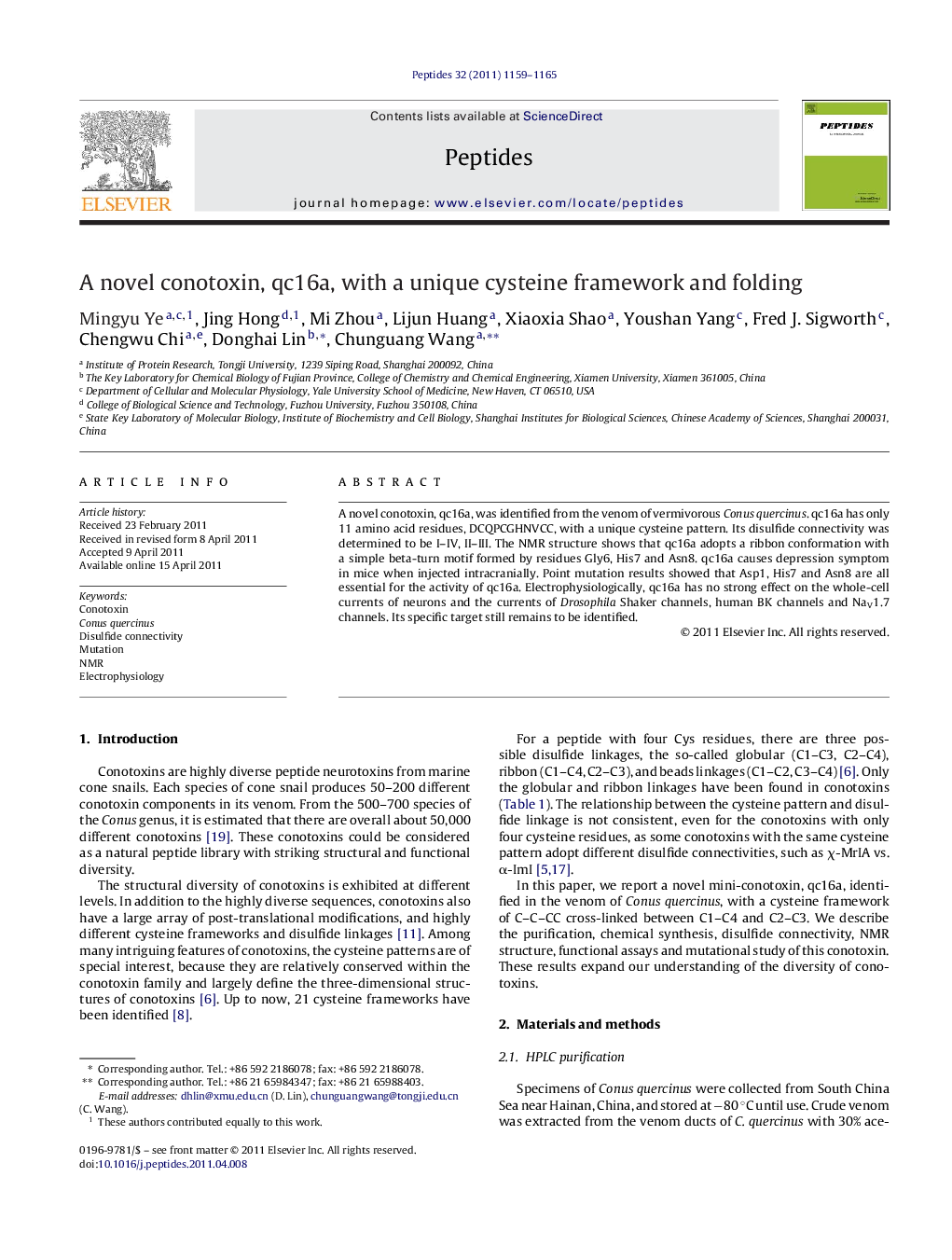| Article ID | Journal | Published Year | Pages | File Type |
|---|---|---|---|---|
| 2006435 | Peptides | 2011 | 7 Pages |
A novel conotoxin, qc16a, was identified from the venom of vermivorous Conus quercinus. qc16a has only 11 amino acid residues, DCQPCGHNVCC, with a unique cysteine pattern. Its disulfide connectivity was determined to be I–IV, II–III. The NMR structure shows that qc16a adopts a ribbon conformation with a simple beta-turn motif formed by residues Gly6, His7 and Asn8. qc16a causes depression symptom in mice when injected intracranially. Point mutation results showed that Asp1, His7 and Asn8 are all essential for the activity of qc16a. Electrophysiologically, qc16a has no strong effect on the whole-cell currents of neurons and the currents of Drosophila Shaker channels, human BK channels and NaV1.7 channels. Its specific target still remains to be identified.
► qc16a is a novel conotoxin with a rare C–C–CC framework. ► qc16a adopts a ribbon conformation with I–IV, II–III disulfide connectivity. ► Asp1, His7 and Asn8 are all essential for the activity of qc16a.
